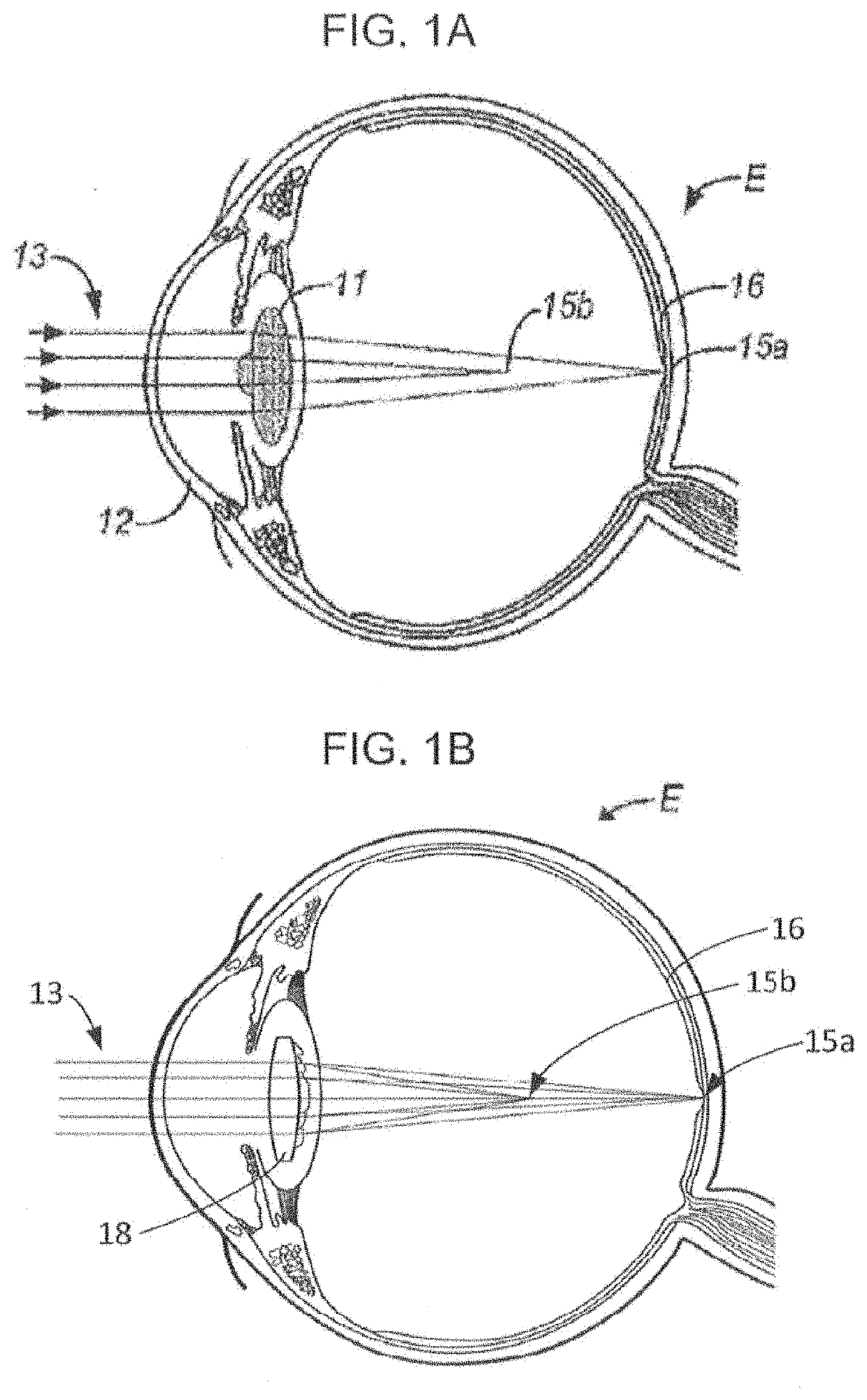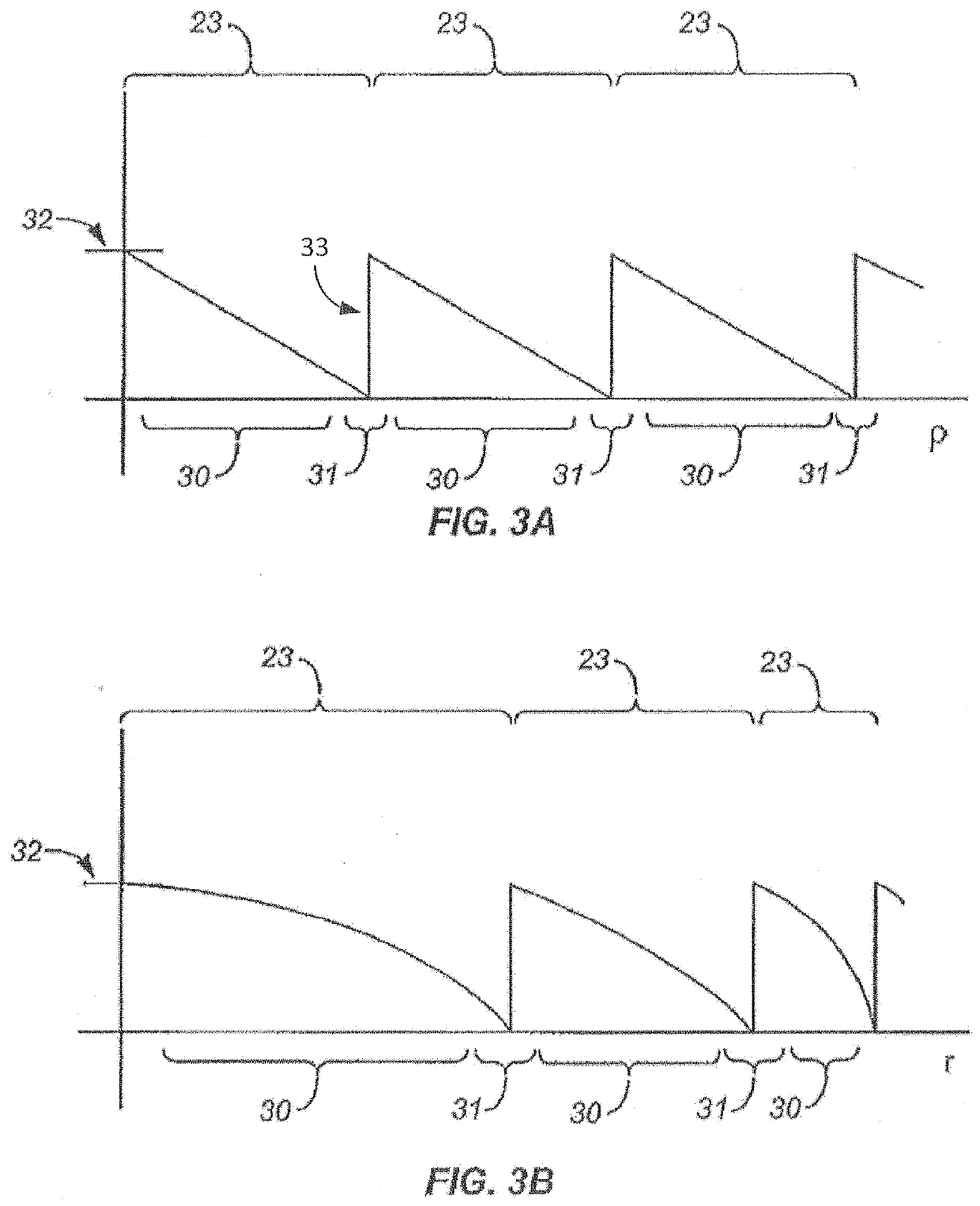Achromatic lenses with zone order mixing for vision treatment
a technology of achromatic lenses and zone order mixing, applied in the field of ophthalmic lenses, can solve the problems of affecting the ocular vision, the lens may also be clouded by age, and the presbyopic eye often loses the ability to quickly and easily refocus on objects, etc., and achieves the effect of different width and extended depth of focus features
- Summary
- Abstract
- Description
- Claims
- Application Information
AI Technical Summary
Benefits of technology
Problems solved by technology
Method used
Image
Examples
Embodiment Construction
[0032]FIGS. 1A, 1B, 2A, 2B, 3A and 3B illustrate multifocal IOL lens geometries, aspects of which are described in U.S. Patent Publication No. 2011-0149236 A1, which is hereby incorporated by reference in its entirety.
[0033]FIG. 1A is a cross-sectional view of an eye E fit with a multifocal IOL 11. As shown, multifocal IOL 11 may, for example, comprise a bifocal IOL. Multifocal IOL 11 receives light from at least a portion of cornea 12 at the front of eye E and is generally centered about the optical axis of eye E. For ease of reference and clarity, FIGS. 1A and 1B do not disclose the refractive properties of other parts of the eye, such as the corneal surfaces. Only the refractive and / or diffractive properties of the multifocal IOL 11 are illustrated.
[0034]Each major face of lens 11, including the anterior (front) surface and posterior (back) surface, generally has a refractive profile, e.g. biconvex, plano-convex, plano-concave, meniscus, etc. The two surfaces together, in relatio...
PUM
 Login to View More
Login to View More Abstract
Description
Claims
Application Information
 Login to View More
Login to View More - R&D
- Intellectual Property
- Life Sciences
- Materials
- Tech Scout
- Unparalleled Data Quality
- Higher Quality Content
- 60% Fewer Hallucinations
Browse by: Latest US Patents, China's latest patents, Technical Efficacy Thesaurus, Application Domain, Technology Topic, Popular Technical Reports.
© 2025 PatSnap. All rights reserved.Legal|Privacy policy|Modern Slavery Act Transparency Statement|Sitemap|About US| Contact US: help@patsnap.com



